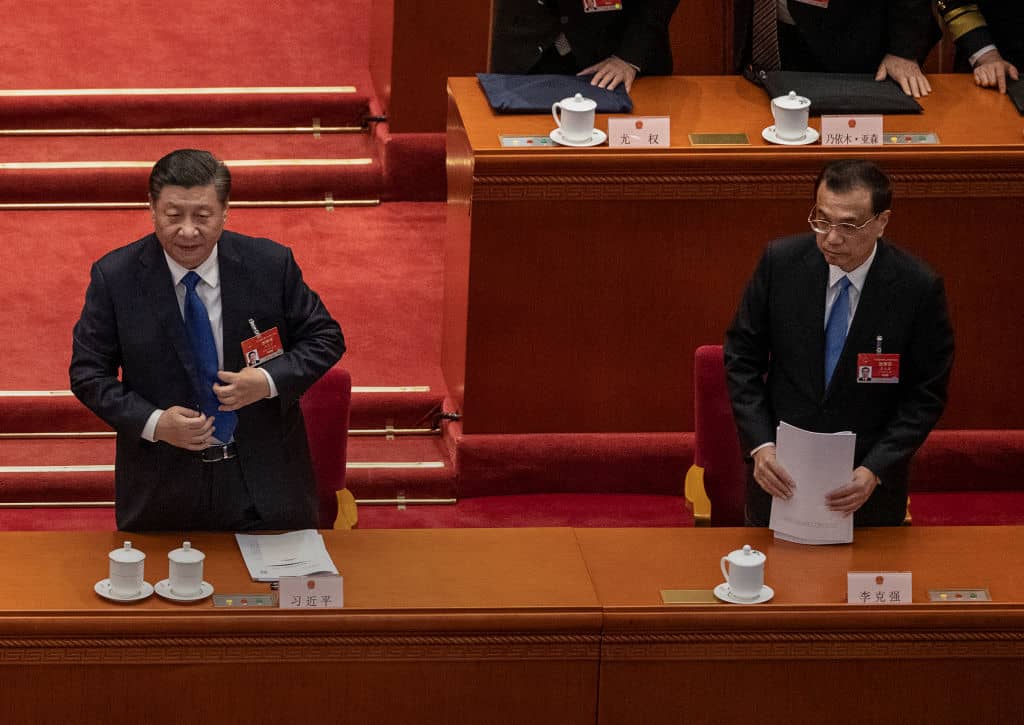China’s most important annual political meetings, the “Two Sessions,” where authorities are expected to lay out the country’s economic and social plans for the year ahead, will kick off on Friday.
Chinese Premier Li Keqiang will appear before China’s legislature, the National People’s Congress (NPC), on March 5 to deliver a government work report that reviews the performances of the past year and sets new targets and policy directions for 2022.
As usual, the meeting of the NPC will take place concurrently with the annual meeting of the National Committee of the Chinese People’s Political Consultative Conference, an advisory body consisting of industry leaders and party delegates.
While Russia’s invasion of Ukraine continues, there has been a heated discussion over China’s potential way out — with its central bank digital currency — if similar SWIFT sanctions are ever imposed on the world’s second-largest economy. China watchers are hoping to see the nation’s top leaders touch on the topic during the Two Sessions.
Meanwhile, there could be more nuances to how China might be involved with the war. The New York Times revealed Wednesday, citing a Western intelligence report, that Chinese officials had some level of direct knowledge of Russia’s invasion plans and asked Russia not to attack before the conclusion of the Winter Olympics.
Here’s what to look for at the upcoming meetings:
Digital yuan
“What I understand is that the Two Sessions will announce urgent, stronger financial support to help small and micro players,” Amnon Samid, CEO of cybersecurity company BitMint, told Forkast. BitMint has led retail CBDC trials for China since 2018.
Samid said the e-CNY could be a perfect tool, if it is a programmed currency, to support small enterprises. “It seems that the e-CNY is not there yet, although the [People’s Bank of China] continues working on developing the digital yuan to become a most efficient tool for better serving financing needs of small and micro enterprises,” he said.
See related article: Lack of audience won’t stop digital yuan showcase at Winter Olympics
China has showcased its e-CNY to a global audience of athletes and diplomats through the Beijing Winter Olympics, which recently concluded. Mu Changchun, director-general of the People’s Bank of China Digital Currency Initiative, said last month the e-CNY was one of only two forms of payment — the other was the credit card of Olympic Games sponsor Visa — accepted at the Olympics venues.
“Now quite unexpectedly the e-CNY is getting even more publicity due to the global interest in sanctions and SWIFT bans after they were imposed on Russia,” Richard Turrin, a Shanghai-based fintech consultant, told Forkast. “The e-CNY has the ability to partially shield China from these kinds of financial restraints and has been in the news daily.”
Turrin said it is likely the upcoming government work paper would address the success of the e-CNY at the Olympics and “have a carefully worded statement that recognizes the strategy of building a currency that is immune from global interference without referencing the conflict.”
Turrin expects that the Two Sessions would recognize new urgency to launching the e-CNY domestically and give newfound importance to its international use — “all as a result of the SWIFT ban and sanctions imposed on Russia.”
Technology innovation
The word “blockchain” was written for the first time into China’s 14th five-year plan covering 2021 to 2025. Released at the Two Sessions last year, China pledged to foster and strengthen the emerging digital industry.
Look for the new five-year plan to further pinpoint the country’s blockchain goals, including the development of smart contracts, multiple-consensus algorithms, asymmetric encryption and distributed fault-tolerance mechanisms.
See related article: China writes blockchain and digital currency into nation’s future
In January, China released a Fintech Development Plan for 2022-2025, which aims to drive the digital transformation of finance and flags that more regulations are in the pipeline.
David Roche, a strategist at Independent Strategy, told Forkast the authorities will describe how they will rein in the metaverse, digital finance and cryptocurrency sectors, but there might be “less active intervention.”
New infrastructure
The National Development and Reform Commission, the nation’s top economic planner, sketched out a plan in April 2020 to bet big on constructing data centers to develop blockchain, 5G networks, artificial intelligence, cloud computing and the internet of things.
China has followed through boldly on the “new infrastructure” strategy. Last month, the state council approved a plan to build computing and data hubs that use blockchain technology to secure data in four regions including the Greater Bay Area.
China is also actively expanding the Blockchain-based Service Network (BSN), a state-backed project to drive mass adoption of blockchain technology across China. The BSN’s most recent efforts include launching a non-fungible token network without any cryptocurrency transactions involved.
GDP target
Last year, Chinese economic planners set a GDP growth target of 6% for 2021, according to the 2021 government work report, after scrapping their 2020 GDP growth target mainly due to the uncertainties caused by the pandemic.
This year, economists’ projections are mixed about whether the 2022 economic growth target will be up or down from 2021.
Gao Ruidong, managing director and chief macroeconomist of Everbright Securities, wrote in January that the 2022 overall GDP target may drop to around 5.3% based on recent economic data from provincial-level governments.
Iris Pang, chief economist of ING Economics, predicted the target for 2022 could be 6% or more, “which is consistent with GDP targets from local governments as they prepare for the Two Sessions.”
Ningwei Qin contributed to this report.





